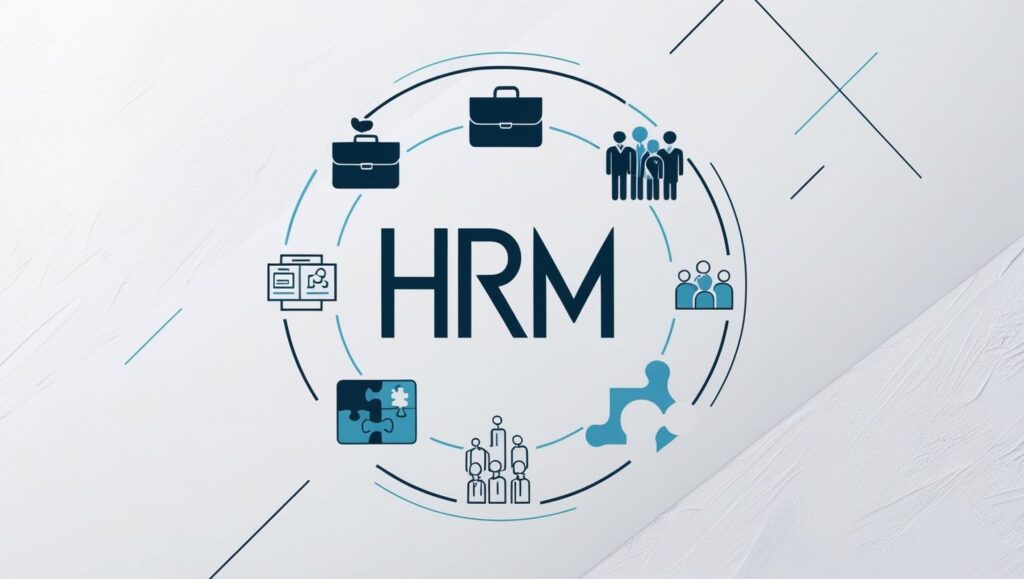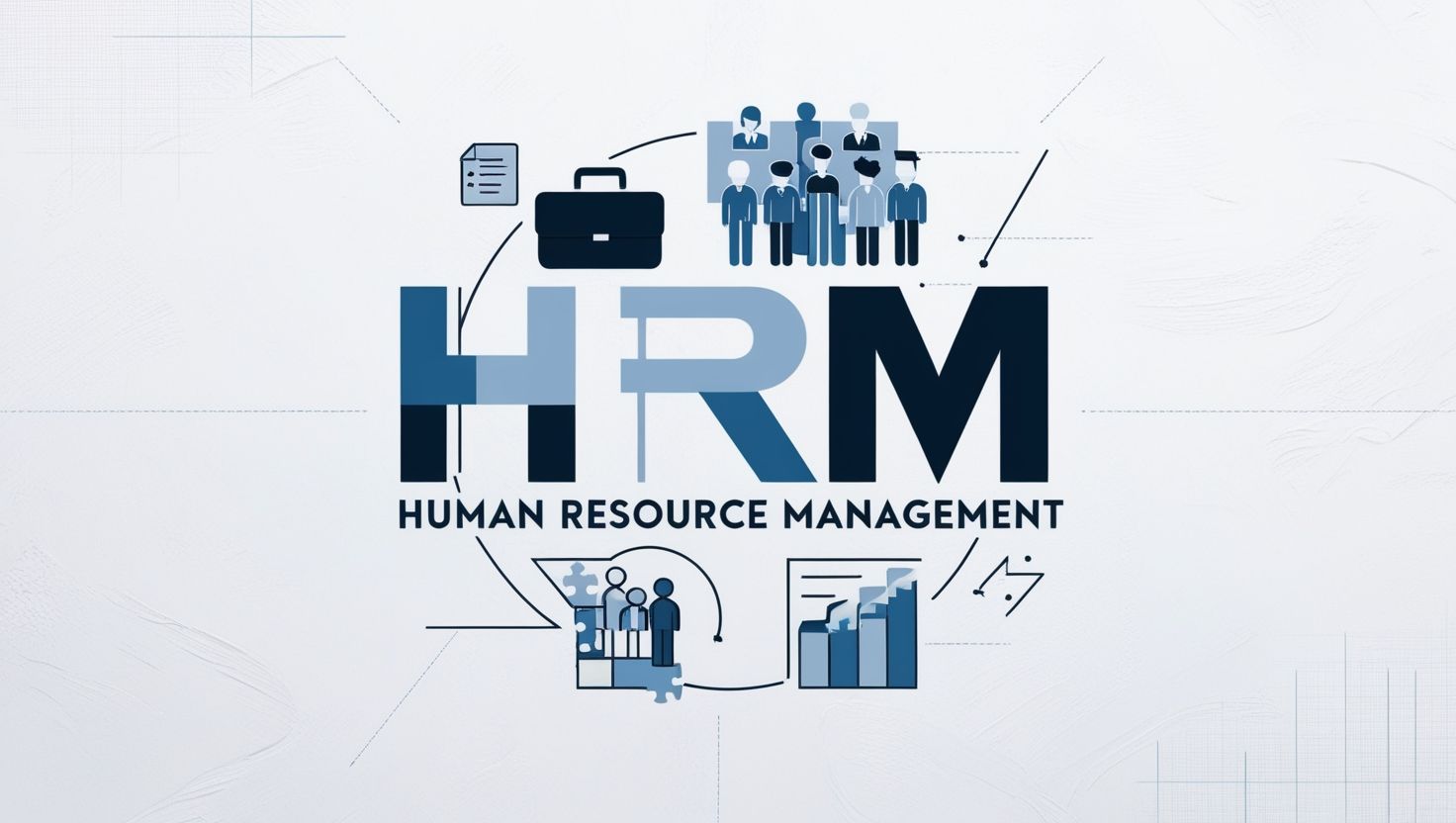Definition, Significance, and Scope of HRM, Human Resource Management (HRM) is a critical function in organizations that focuses on recruiting, managing, and optimizing the human capital of a company. Beyond merely being a department, HRM is a dynamic field that aligns human resource strategies with organizational goals, fostering a workplace environment where employees can thrive and contribute effectively to the organization’s success.
Definition of Human Resource Management
HRM is defined as the strategic and comprehensive approach to managing people in a way that maximizes their contribution to the organization. It encompasses a range of activities, including recruitment, training, performance appraisal, compensation management, and employee relations.
According to Edwin B. Flippo, “HRM is the planning, organizing, directing, and controlling of the procurement, development, compensation, integration, maintenance, and separation of human resources to achieve individual, organizational, and societal objectives.” This definition highlights the multidimensional nature of HRM, emphasizing its alignment with both business and individual goals.
Significance of Human Resource Management
- Recruitment and Talent Acquisition
HRM plays a crucial role in identifying and attracting the right talent for an organization. By aligning recruitment processes with organizational goals, HR professionals ensure that only the most suitable candidates are selected, leading to improved productivity and innovation. - Employee Development and Training
Employee development is pivotal to maintaining a competitive workforce. HRM designs training programs that enhance employees’ skills, keeping them updated with industry trends. Continuous learning not only improves individual performance but also contributes to the organization’s growth. - Performance Management
Effective HRM ensures that employees’ performance is aligned with organizational objectives through performance appraisal systems, constructive feedback, and performance-based rewards. This alignment fosters a culture of accountability and excellence. - Conflict Resolution and Employee Relations
Workplace conflicts, if left unresolved, can disrupt productivity. HRM provides a structured approach to conflict resolution, promoting harmony and a positive work environment. Good employee relations also enhance job satisfaction and retention rates. - Legal Compliance and Risk Management
HRM ensures compliance with labor laws and regulations, protecting the organization from legal disputes. By managing risks related to employment practices, HRM safeguards both employees and employers. - Enhancing Organizational Culture
HRM fosters a work culture that reflects the organization’s values and mission. A positive culture not only boosts employee morale but also attracts top talent, thereby improving the organization’s reputation.

Scope of Human Resource Management
The scope of HRM is broad, encompassing multiple dimensions of people management. It extends beyond administrative tasks to strategic functions that impact the overall success of the organization.
- Workforce Planning
HRM involves forecasting future workforce needs based on organizational goals. Workforce planning ensures that the right number of employees with the right skills are available when needed, preventing resource shortages or surpluses. - Recruitment and Selection
The recruitment process is a fundamental aspect of HRM. It includes job analysis, advertising vacancies, conducting interviews, and selecting candidates who fit both the job requirements and organizational culture. - Learning and Development
HRM facilitates professional growth by offering training programs, mentorship opportunities, and career development plans. By investing in employees’ skill enhancement, organizations ensure sustained growth and adaptability. - Compensation and Benefits
HRM designs competitive salary structures and benefits packages to attract and retain talent. This includes not only monetary rewards but also perks such as health insurance, retirement plans, and wellness programs. - Performance Management and Appraisal
Regular performance evaluations help identify strengths and areas for improvement. HRM systems ensure that appraisals are fair, transparent, and linked to rewards or developmental initiatives. - Employee Engagement and Retention
Engaged employees are more productive and loyal. HRM promotes engagement through recognition programs, open communication, and by fostering a sense of purpose among employees. - Health, Safety, and Well-being
Ensuring employees’ physical and mental well-being is a critical responsibility of HRM. By implementing safety protocols and wellness programs, HRM creates a safe and supportive work environment. - Diversity and Inclusion
Modern HRM emphasizes creating a diverse and inclusive workforce. By embracing differences in ethnicity, gender, age, and perspectives, organizations can foster innovation and cater to a broader audience. - Industrial Relations
Maintaining healthy relations with trade unions and addressing collective grievances fall within the scope of HRM. This ensures industrial harmony and prevents disruptions to business operations. - HR Technology and Analytics
The integration of technology in HRM, such as HR analytics and AI-driven recruitment tools, has expanded its scope. HR analytics provides insights into workforce trends, enabling data-driven decision-making.
The Evolving Nature of HRM
The field of HRM has evolved significantly over the decades, transitioning from administrative functions to a strategic partner in business. With technological advancements, globalization, and changing workforce dynamics, HRM now encompasses areas such as remote work management, gig economy integration, and sustainability practices.
Conclusion
Human Resource Management is an indispensable function in any organization, directly influencing its growth and sustainability. By addressing the needs of both employees and employers, HRM creates a balanced ecosystem that fosters productivity, innovation, and organizational success. Its significance lies in its ability to adapt to changing trends and continuously align human resource strategies with organizational objectives, making it a cornerstone of modern business operations.
This comprehensive scope and significance underline why HRM is not just a support function but a vital strategic asset in the global business landscape.

vess8q
pmfekv
ewzrqd
I have been browsing online greater than three hours nowadays, yet I by no means discovered any fascinating article like yours. It is lovely worth sufficient for me. In my view, if all site owners and bloggers made excellent content as you probably did, the net will likely be a lot more useful than ever before.
2t3zp9
0fbssb
I love it when people come together and share opinions, great blog, keep it up.
I got what you mean ,saved to bookmarks, very decent web site.
Thank you for the sensible critique. Me and my neighbor were just preparing to do a little research on this. We got a grab a book from our local library but I think I learned more from this post. I am very glad to see such fantastic information being shared freely out there.
Heya i’m for the primary time here. I came across this board and I in finding It really helpful & it helped me out much. I am hoping to offer something back and help others such as you helped me.
There is perceptibly a bunch to know about this. I feel you made certain nice points in features also.